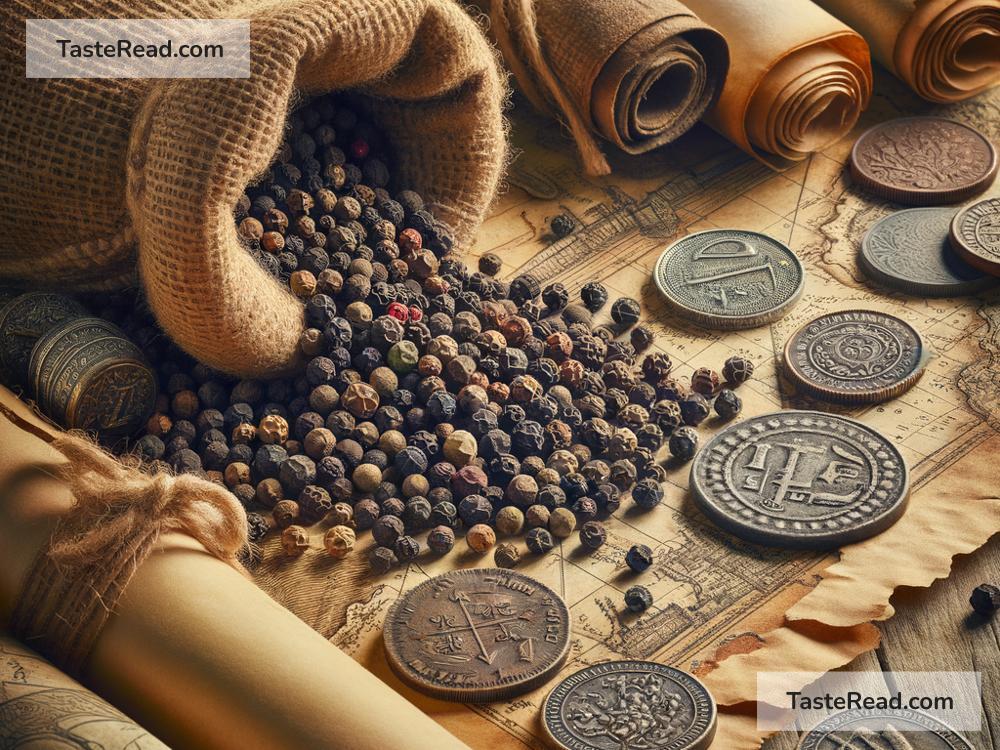How Peppercorns Became a Symbol of Power
Today, when we think of pepper, we imagine the small black grains that we sprinkle over our food to make it tastier. But this tiny spice has a remarkable history. At one point in time, peppercorns were worth their weight in gold and were symbols of wealth, power, and influence. How did peppercorns become so important? Let’s take a journey through history to explore their rise to power.
What Are Peppercorns?
Peppercorns come from the fruit of a plant called Piper nigrum, which grows in tropical climates like those in India and Southeast Asia. Once harvested, the berries are dried to become the peppercorns we know today. Black, white, red, and green peppercorns come from the same plant but are processed differently. Black peppercorns are the most common because they are dried until they turn dark and wrinkly.
The Early Popularity of Pepper
Pepper has been used for thousands of years. Ancient Indian texts mention its use in cooking and medicine. It was prized for its unique spicy flavor and its ability to preserve food. Around 2000 BCE, pepper began to be traded with nearby regions, reaching Mesopotamia and Egypt. Slowly, word about this “king of spices” spread further.
But it was the ancient Romans who turned pepper into a commodity of great value. The Romans imported huge quantities of pepper from India. As Roman society grew wealthier, spices like pepper were considered luxuries for the elite. Wealthy households added pepper to their meals as a sign of their status.
The Spice Trade and Pepper’s Hidden Power
By the Middle Ages, pepper became even more valuable. Why? Because it was hard to get. Pepper was grown only in tropical areas like India and was transported across long and dangerous trade routes. Traders had to travel by land through deserts and jungles or by sea through unpredictable waters. These journeys took months or even years, and many traders faced pirates, bad weather, and illnesses.
Since it was so difficult to transport pepper, prices rose sharply. Only rich merchants, kings, and rulers could afford it. Peppercorns became a luxury item, like gold or precious gems. In some cases, peppercorns were even used as currency. Workers were paid in pepper, and debts or dowries were settled with it. A bag of peppercorns was seen as a symbol of wealth and power.
The city of Venice, Italy, became one of Europe’s major hubs for the pepper trade. Venetian merchants transported pepper from Asia into Europe and controlled its distribution. This gave Venice immense wealth and political influence during the Middle Ages.
Pepper and European Exploration
The high value of pepper helped kickstart one of the most significant periods in history: the Age of Exploration. By the 1400s, Europe wanted a direct route to Asia, where spices like pepper grew, instead of relying on middlemen from Venice and Arabia. This led to a race among European nations like Portugal, Spain, and later England and the Netherlands to find new sea routes to India and Southeast Asia.
Portuguese explorer Vasco da Gama was one of the first Europeans to reach India by sea in 1498. His journey brought back loads of pepper and other spices, making Portugal extremely wealthy. Soon after, other European nations sent their own explorers to compete for control over the spice trade. Colonization of countries like India, Indonesia, and Malaysia began, with pepper and other spices fueling the rivalry.
Pepper and Colonial Power
By the time colonial empires were established, pepper was more than just a spice; it was a tool for global domination. European powers controlled pepper plantations in Asia, forcing local farmers to grow it under strict conditions. They monopolized pepper trade routes to increase their wealth. The British East India Company and Dutch East India Company became some of the largest and most powerful organizations in the world, ruling over colonies and controlling global spice markets.
Trade in peppercorns and other spices transformed cities, countries, and economies. It also led to conflicts, wars, and exploitation, as nations fought for control of this “black gold.”
Pepper Today: From Power to Pantry
So, what happened to pepper’s status as a symbol of power? Over time, colonization broke traditional trade monopolies, and pepper plants were grown in more places around the world. As transportation improved, pepper became cheaper and more accessible to everyone—not just the wealthy elite. Today, pepper is everywhere, found in kitchens, restaurants, and supermarkets. Families around the world use it daily to season their meals without thinking twice about how valuable it once was.
Even though peppercorns are no longer currency or symbols of great power, their history reminds us of how something as small as a spice can shape economies, cultures, and nations. From ancient India to modern grocery stores, pepper has traveled far and wide, leaving a mark on every stop along the way.
Final Thoughts
Peppercorns may be tiny, but their impact on history is huge. They sparked exploration, built empires, and even caused wars. While today their power has faded, the journey of this humble spice continues to inspire us. Next time you sprinkle pepper on your food, take a moment to think about its extraordinary story—the story of how peppercorns once ruled the world.


